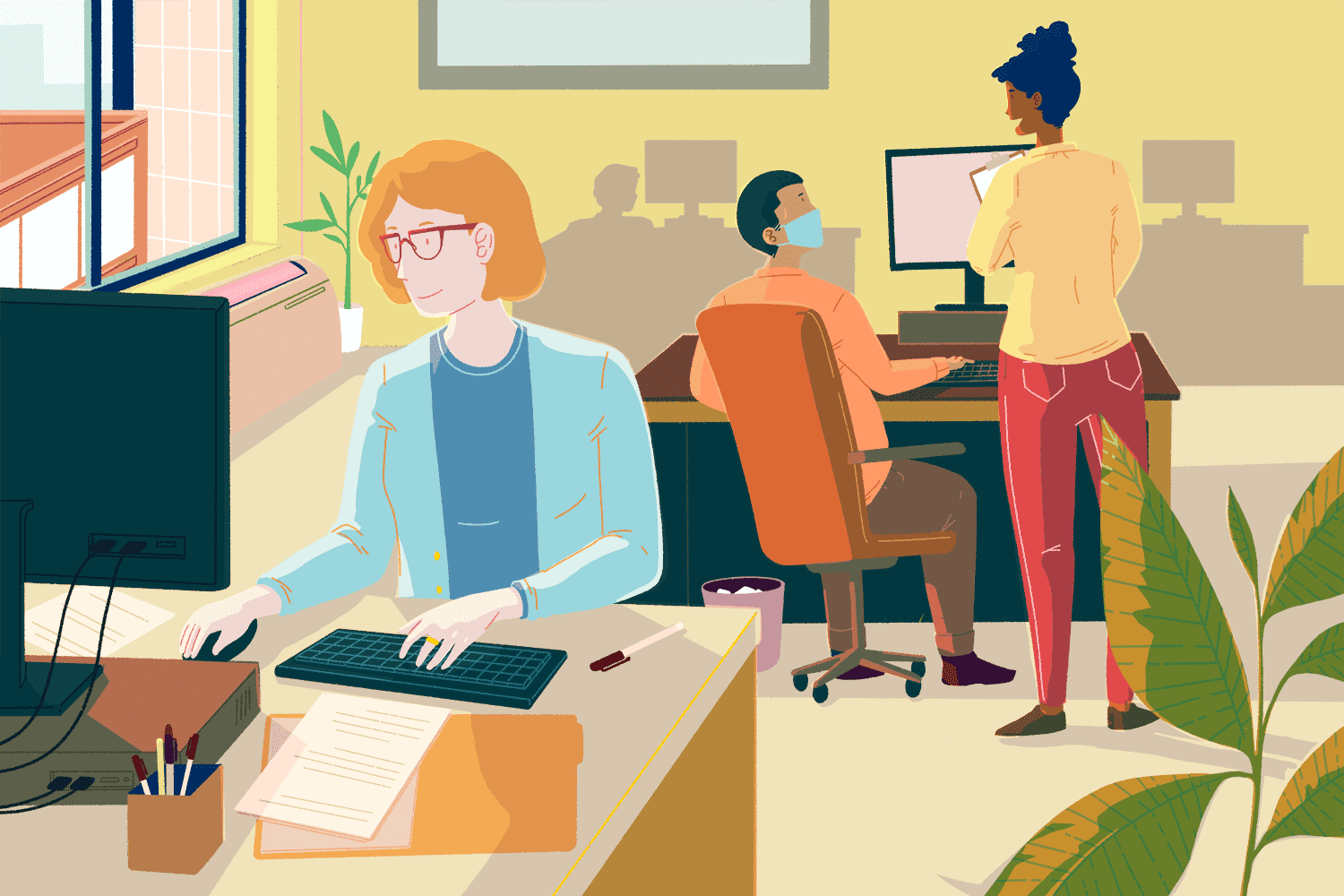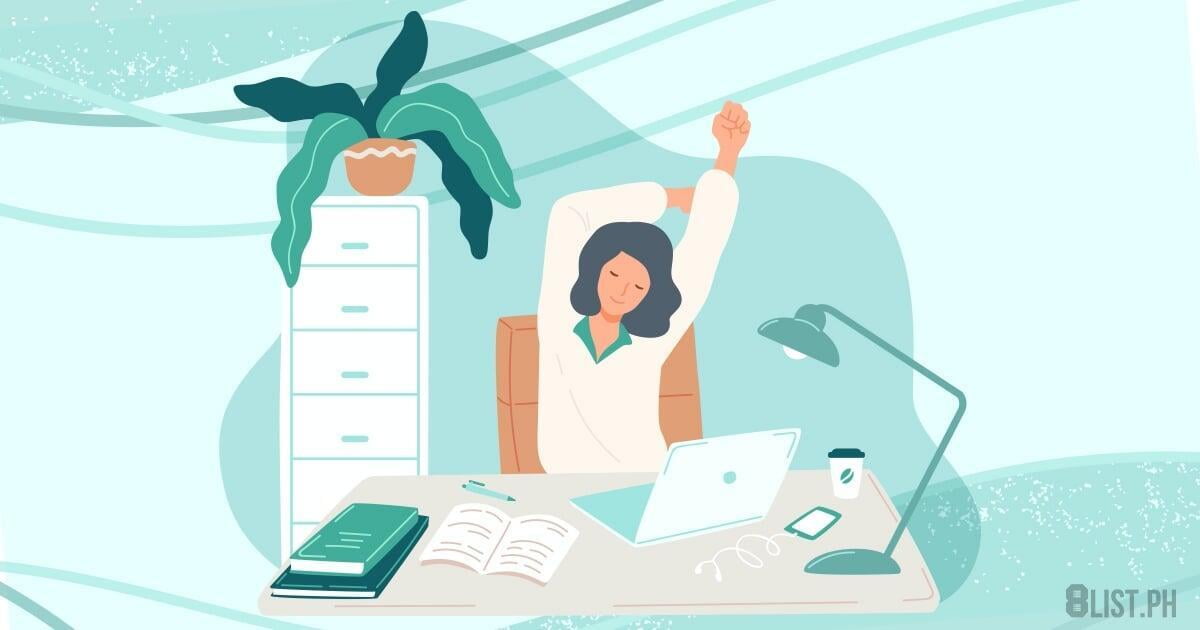The Importance of Taking Breaks During In-Person Work
Author: Katrina Kidd
This year, many of us have had to shift from remote work back to in-person. With this comes the challenge of finding ways to get back into a routine that works with our schedules. With these shifting conditions, it is important to recognize the value of taking breaks from work throughout the day and to identify the best ways to help our mental and physical health.
When working on goal-oriented tasks that require deep concentration, our prefrontal cortex controls our logical thought and decision-making. However, it also plays a role in resisting impulses. When we work for too long, this extended executive resource depletion decreases activity in the prefrontal cortex, making it more difficult to resist the impulses of distraction and hindering our cognitive abilities1.

Although we might find that we can work on the same project for extended periods, this isn’t necessarily the most effective long-term practice. Instead, introducing frequent and short breaks into our workday can have long-lasting benefits for our productivity and mood. These are referred to as micro-breaks, informal, self-chosen, short breaks from work, lasting anywhere between one and ten minutes2. Because these breaks are voluntary and undertaken at irregular intervals, we view them as a reward for working productively. This can lead to dopamine release which can sustain activity in the prefrontal cortex over extended periods3. These breaks may seem insignificant, but they can allow us to work on a task without being easily distracted.
Taking micro-breaks is an important practice because it:
- Increases long-term motivation
- For challenging tasks that require sustained attention, doing something you enjoy during a break can take your mind off the goal for a short time and strengthen your motivation when you get back to the task4.
- Increases productivity
- Taking short, regular breaks when working on a task can increase our engagement, positively boosting our perceived performance5.
- Prevents decision fatigue
- If we work throughout the day without taking a break, making multiple decisions over time can lead to decision fatigue: simplistic decision-making in which we choose the easiest and safest option rather than assessing all options6. When working on tasks that require critical thinking, even taking short breaks throughout the day can prevent this fatigue and allow us to make better decisions.
Much of this may be repetitive - we already know that breaks are important, but it’s easier said than done, and there are ways to make breaks more effective. So, when you notice that your attention is waning while working on a single task, here are some ideas for the best ways to take short breaks that will boost your mood and your productivity:
- Take a 3-minute walk
- Taking frequent and short physical activity breaks, such as a walk around your work area, can improve your cognitive functioning. This is because even short bursts of physical activity, around 3 minutes, can increase blood flow to task-related brain areas. Doing this throughout the day can improve our performance for tasks that use the logical thought processes of our prefrontal cortex. 7
- Daydreaming
- When working on a task, we might find that our mind wanders, and we daydream. Although we usually view this as a distraction, when daydreaming, our brain is taking part in memory consolidation processes similar to sleep8. If we willingly allow ourselves to take this break, we might find that we can better remember the content we are researching.
- Visit a colleague
- One of the best aspects of transitioning back to in-person work is the proximity of colleagues to your work area. For most of us, other lab members are merely a desk or a room away. Negative stress put on our prefrontal cortex throughout the workday can be relieved through informal face-to-face interaction by improving our mood9. Whether asking about someone’s day or what they did over the weekend, casual conversation unrelated to your work can positively impact your mood for the rest of the day.
- Go outside
- Whenever possible, taking a short break to sit or walk outside is more beneficial than taking breaks indoors. When we take a break outdoors, we’re more likely to stick to the intended time and are more motivated to return to our task without getting distracted10.
- Switch tasks
- When you can’t take a break but your motivation for your current task is waning, try switching tasks. This method is known as interleaving and can improve the amount of information we retain and help us distinguish between similar concepts that we learn simultaneously11.

The most important thing to remember when taking a break is that you shouldn’t force yourself. If you are in a state of flow, fully absorbed in the task and your concentration feels effortless, this is a sign that you have enough energy to continue the task and that you are enjoying what you are doing. Rather than stopping at set intervals, continue working until your attention diminishes, then take a break. Giving yourself the option will increase your engagement in your work and improve overall performance12.
The next time you find yourself working on finishing something before a deadline, try some of these tips to make the most of your time and make you feel better about your work.
References
1. Persson J, Larsson A, Reuter-Lorenz PA. Imaging Fatigue of Interference Control Reveals the Neural Basis of Executive Resource Depletion. J Cogn Neurosci. 2013;25(3):338-351. doi:10.1162/jocn_a_00321
2. Kim S, Park Y, Niu Q. Micro-break activities at work to recover from daily work demands. J Organ Behav. 2017;38(1):28-44. doi:10.1002/job.2109
3. Boksem MAS, Tops M. Mental fatigue: Costs and benefits. Brain Res Rev. 2008;59(1):125-139. doi:10.1016/j.brainresrev.2008.07.001
4. Hunter EM, Wu C. Give me a better break: Choosing workday break activities to maximize resource recovery. J Appl Psychol. 2016;101:302-311. doi:10.1037/apl0000045
5. Albulescu P, Macsinga I, Rusu A, Sulea C, Bodnaru A, Tulbure BT. “Give me a break!” A systematic review and meta-analysis on the efficacy of micro-breaks for increasing well-being and performance. PLOS ONE. 2022;17(8):e0272460. doi:10.1371/journal.pone.0272460
6. Rachet-Jacquet L. Do breaks from surgery improve the performance of orthopaedic surgeons? J Health Econ. 2022;85:102667. doi:10.1016/j.jhealeco.2022.102667
7. Herold F, Wiegel P, Scholkmann F, Müller NG. Applications of Functional Near-Infrared Spectroscopy (fNIRS) Neuroimaging in Exercise–Cognition Science: A Systematic, Methodology-Focused Review. J Clin Med. 2018;7(12):466. doi:10.3390/jcm7120466
8. Wamsley EJ, Stickgold R. Dreaming and offline memory processing. Curr Biol. 2010;20(23):R1010-R1013. doi:10.1016/j.cub.2010.10.045
9. Watanabe J ichiro, Atsumori H, Kiguchi M. Informal Face-to-Face Interaction Improves Mood State Reflected in Prefrontal Cortex Activity. Front Hum Neurosci. 2016;10. Accessed November 10, 2022. https://www.frontiersin.org/articles/10.3389/fnhum.2016.00194
10. Epstein DA, Avrahami D, Biehl JT. Taking 5: Work-Breaks, Productivity, and Opportunities for Personal Informatics for Knowledge Workers. In: Proceedings of the 2016 CHI Conference on Human Factors in Computing Systems. CHI ’16. Association for Computing Machinery; 2016:673-684. doi:10.1145/2858036.2858066
11. Pan S. The interleaving effect: Mixing it up boosts learning. Sci Am. Published online August 4, 2015.
12. Tisu L, Vîrgă D, Mermeze I. Autonomy and Performance: Proactive Vitality Management and Work Engagement as Sequential Mediators of the Relationship. Psychol Rep. Published online November 26, 2021:00332941211048470. doi:10.1177/00332941211048470